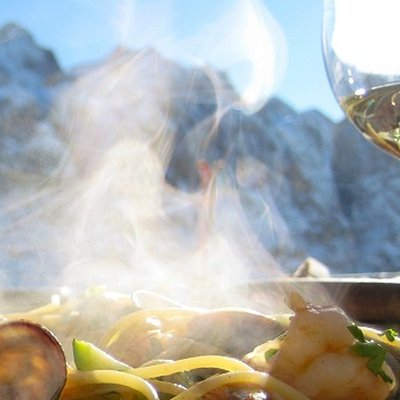Bushfire Preparation Starts At Australian Resorts

Alpine Resorts Victoria (ARV) has started its annual bushfire preparation program for the 2023-24 summer, and is calling on alpine communities to support efforts to protect alpine resorts by helping with clean-up and maintenance activities.
Southern Australia is bracing for a hot summer, with the Australian Bureau of Meteorology’s announcement in September that the El Niño phase of the El Niño-Southern Oscillation (ENSO) is now underway.
CFA and ARV partner to protect alpine resorts
ARV resorts are well aware of the impact that bushfires in the alpine regions can have, the most recent being the 2019-20 ‘Black Summer’ bushfire which affected Falls Creek, Mt Hotham and Mt Buller/Mt Stirling.
As a result, ARV resorts are proactive about bushfire preparation, which started in Spring in Victoria’s alpine areas with the assistance of Victoria’s Country Fire Authority (CFA).
“Everything an individual property owner does to help protect their own property also has a wider benefit – it helps the whole resort avoid impact from a bushfire,” said Elise Armitage, ARV Head of Property and Planning.
“We know the devastating impacts a bushfire can have on a small community. By doing a relatively small amount of work together before the bushfire season, we can significantly support firefighting efforts by reducing some of the risk.”
Alpine property owners need to be proactive in their preparations leading up to the bushfire danger period.
The CFA’s Mark Owens, Commander of the Alpine Service Delivery Team, agrees.
“It’s important for people to be aware that Victoria’s fire services don’t have the resources to protect individual properties. If there are fires in one location, there will be fires in other locations. Our first priority therefore is to protect life. Our second priority is to defend critical infrastructure, like water and power supplies,” said Commander Owens.
ARV’s resort management teams have been working with the CFA since October to provide support to property owners, with fire preparation days already held at the resorts.
“Just because it’s still green doesn’t mean anyone can afford to be complacent,” he said. “The weather is likely to turn warm quickly, and when you consider the distance that alpine property holders have to travel to get to their properties, it could be too late if you wait too long to prepare.”
Annual bushfire preparation days help property owners get ready
Most property owners at ARV’s alpine resorts don’t live at the resorts year-round, and many only visit during the winter season. It’s important for these property owners to ensure maintenance and clean-up is done during the ‘green season’ to protect their properties and the resort as a whole.
To help property owners with this task, ARV’s resorts hold annual bushfire preparation events. During these events, resort management staff provide vegetation clearing assistance and both resort management and the local CFA team advise on ensuring properties are well protected from fire fronts and ember attacks.
In addition, the CFA conduct free CFA Property Advice visits, where the CFA’s experts take on-site tours and provide specific recommendations for protecting properties.
These bushfire preparation events are usually held in late November or early December. Each resort will also normally schedule a hard rubbish collection that aligns with the date of the bushfire preparation day to help property owners with their clean up.
ARV’s property owners are responsible for general clean-up on their leases, including removing fuel such as long grass, fallen limbs, wood, rubbish, leaf litter, twigs and bark, and closing all property windows and doors and reducing or sealing gaps in buildings.
CFA’s tips for keeping your alpine property bushfire-safe:
Gas bottles
· Consider the direction the gas bottles’ vents are pointing. If the bottles get hot enough to vent, they can create a jet stream as long as 2 metres. Therefore the vent should be pointing away from the building and into the open. Ensure they are not pointing into vegetation either.
· Gas bottles should be tied down - as soon as it falls over the vent is blocked and creates the risk of an explosion
· Gas bottles should not be placed on anything that can catch fire such as wooden decks
Winter woodpile – this should not be stored close to your building as the heat can burn the external walls (which are often wooden on older alpine properties), melt and ignite external PVC pipes, and create embers that can enter the building through gaps.
PVC pipes melt then ignite, which causes building fires. Use sisalation that is highly fire rated to wrap pipes.
Seal open areas under buildings
If the property is used over summer:
- Ensure all fire and evacuation plans and emergency exit signage is updated and located where people can find them.
- Provide building entry codes or a spare key to the local CFA station in case they need to get into the property.













